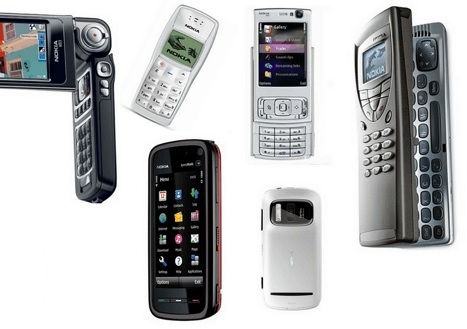- Islamabad
- 26.6°C
- Today ( Tuesday, 27 May 2025)
- Home
- Gadgets & Devices
- From Glory to Decline: Nokia Mystery in the Smartphone Era
From Glory to Decline: Nokia Mystery in the Smartphone Era
Once a titan in the mobile phone industry, Nokia's descent from its pinnacle of success in the early 2000s has been a subject of scrutiny and speculation. While the Finnish company was once synonymous with mobile innovation and durability, its failure to navigate the transition to smartphones left it trailing behind competitors. Several factors contributed to Nokia's decline in the phone races, despite its early greatness. 1. Resistance to Change: Nokia was a dominant force in the feature phone market, renowned for producing sturdy devices with exceptional battery life. However, the company was slow to adapt to the paradigm shift towards smartphones. While other competitors embraced touchscreen technology and app ecosystems, Nokia clung to its Symbian operating system, missing out on the smartphone revolution that was spearheaded by the likes of Apple and Android. 2. Operating System Woes: Nokia's commitment to Symbian proved to be a fatal flaw. As consumer preferences shifted towards more user-friendly and app-centric operating systems like iOS and Android, Symbian became outdated and struggled to compete. The delayed transition to the Windows Phone platform in 2011, through a partnership with Microsoft, failed to revive Nokia's fortunes in the rapidly evolving smartphone landscape. 3. Lack of App Ecosystem: One of the key reasons for the success of competitors like Apple and Android was the vibrant and expansive app ecosystems they fostered. Nokia's Ovi Store, an attempt to create its own app marketplace, failed to attract developers and consumers alike. This lack of a robust app ecosystem diminished the appeal of Nokia's smartphones compared to the rich offerings of its rivals. 4. Inability to Innovate: While Nokia was once celebrated for its cutting-edge features, such as the iconic Nokia 3310's durability and the N95's advanced camera, the company struggled to innovate in the smartphone era. Apple's iPhone and subsequent Android devices revolutionized the industry with touchscreens, intuitive interfaces, and sleek designs. Nokia's attempts to catch up were marred by uninspiring designs and a failure to introduce groundbreaking features. 5. Strategic Missteps: Nokia's partnership with Microsoft, while an effort to rejuvenate its smartphone lineup, proved to be a strategic misstep. The exclusivity of Windows Phone on Nokia devices limited the appeal to a broader audience already immersed in the Android and iOS ecosystems. By the time Nokia embraced Android with the Nokia X series, it was too late to reclaim a significant market share. In hindsight, Nokia's decline in the phone races was a result of a combination of factors, including a resistance to change, an outdated operating system, a lackluster app ecosystem, a failure to innovate, and strategic missteps. The once-dominant mobile giant's fall serves as a cautionary tale in the ever-evolving tech industry, emphasizing the importance of adaptability and foresight in staying relevant in the face of rapid technological shifts.
-
As the upcoming elections draw near, Pakistan finds itself in the midst of a political whirlwind, with the major players employing various strategies to secure their positions. The dynamics are as unpredictable as ever, showcasing the intricate web of alliances, betrayals, and...
-
Luis Rubiales, the ex-president of the Spanish football federation, has been handed a decisive three-year ban by FIFA in response to his controversial behavior following the Women's World Cup final. The ban comes in the wake of reports detailing inappropriate conduct to...
Get Newsletter
Subscribe to our newsletter to get latest news, popular news and exclusive updates.























Facebook Comments